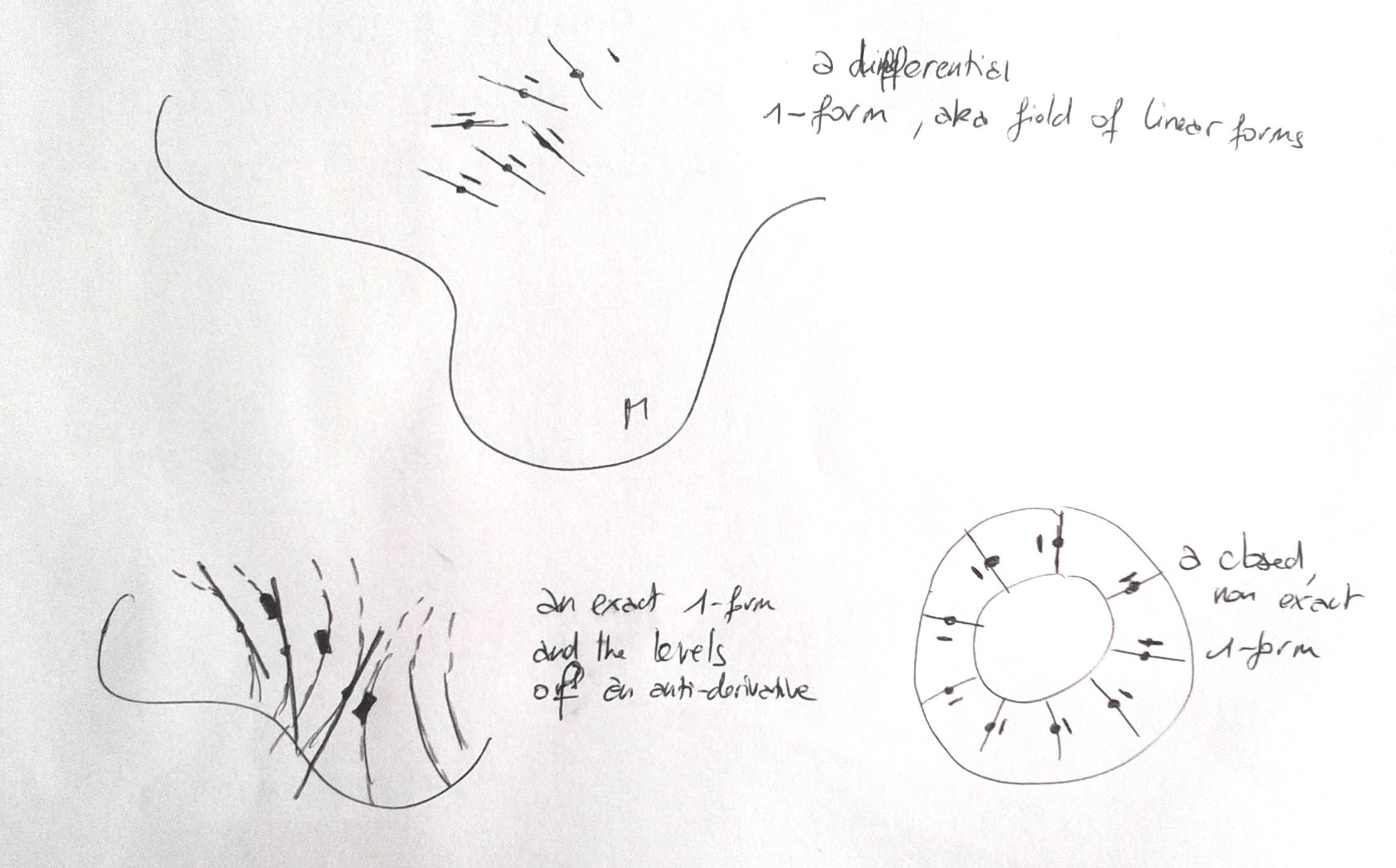The $k$-forms that are easiest to describe are those with $k \in \{0,1,n-1,n\}$. A 0-form on an $n$-manifold is a function. A 1-form on an $n$-manifold, if you imagine it in $n+1$ dimensions, is like an arrangement of shingles on a roof: At each point of the manifold, it defines a directional slope, which as other people have said, is the same as a dual vector on tangent vectors. An $n$-form is a density, i.e., an entity that you can integrate over the manifold. And an $(n-1)$-form is a flux (like, say, describing oil coming out of a well): At each point it has a null tangent direction, and it assigns a non-zero volume to each cross section.
Of course you can think of any $k$-form as a $k$-dimensional flux, and for general values of $k$ you might as well. But when $k$ is 1 or $n-1$, it is somewhat easier to visualize the condition that the form is closed. A 1-form is closed when the shingles locally mesh as the slope of a smooth roof, i.e., the form is locally integrable. An $(n-1)$-form is closed when the flux is locally conservative, which for instance is the case with fluid flow. In fact, theorem: A closed, non-zero $(n-1)$-form is equivalent to a 1-dimensional foliation with a transverse volume structure.
The reason that other values of $k$ are harder is that while you do get an entirely analogous algebraic integrability condition when the form is closed, you might not get the same kind of geometric integrability. A non-zero 1-form has an $(n-1)$-dimensional kernel at each point. (Although the visualization that I suggested is in $n+1$ dimensions, it is also true in $n$ dimensions that these tangent hyperplanes mesh when the 1-form is closed.) A non-zero $(n-1)$-form has a 1-dimensional kernel at each point. But a $k$-form for other values of $k$ doesn't usually have a kernel. (Okay, a maximum rank 2-form in odd dimensions also has a 1-dimensional kernel, and it is equivalent to a 1-foliation with a transverse symplectic structure.)
I have heard the statement that only 1-forms and 2-forms are any good. (Well, that's an overstatement, but they are more important than the others except for maybe $0$ and $n$.) In particular, symplectic forms show up a lot, so it is important to try to imagine them even though by definition they have no kernels. I think of a symplectic form as a calibration for a local complex structure. (Or an almost complex structure, which might be all that exists globally.) I.e., among the different tangent 2-planes of a symplectic $2n$-manifold, the ones that are complex lines have the greatest pairing with the symplectic form, while the ones that are real planes have vanishing pairing, and the pairing minimum is achieved by complex lines with the wrong orientation.
One more remark: The geometric picture of a foliation with a transverse volume structure holds for closed $k$-forms that are also non-zero simple forms (i.e., wedge products of linearly independent 1-forms). I think it's a theorem that any closed $k$-form is locally a sum of closed, simple $k$-forms. If that's correct, then that's also a way to visualize a closed $k$-form, as an algebraic superposition of volumed foliations. $k=1$ and $k=n-1$ are special cases in which every non-zero form is simple.



